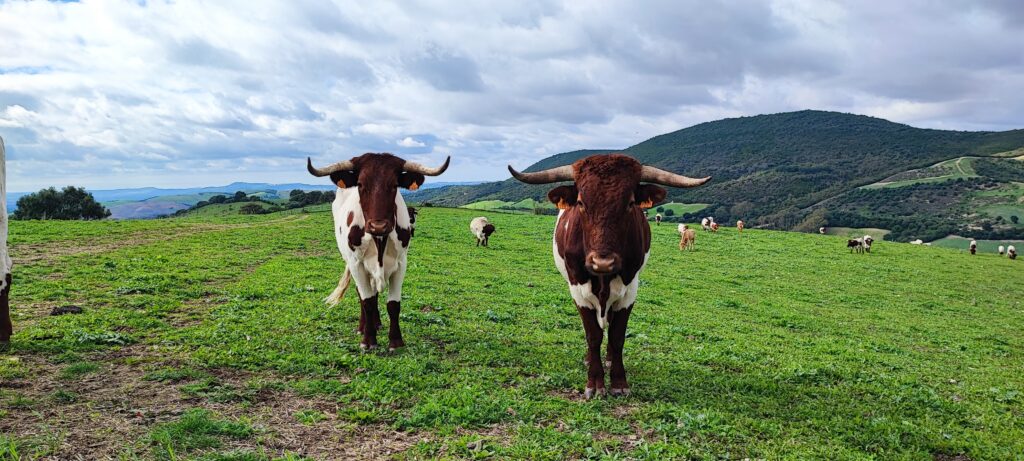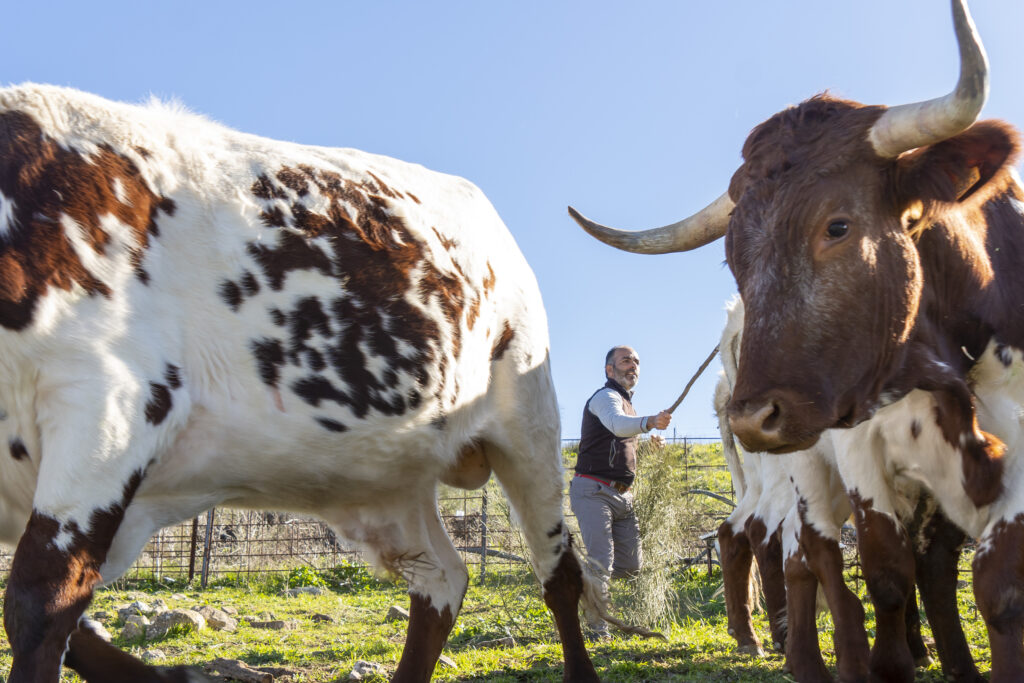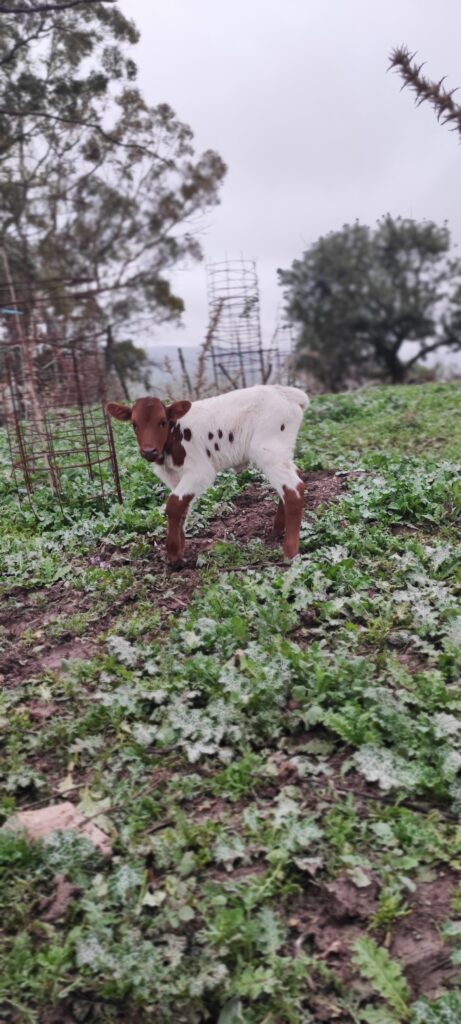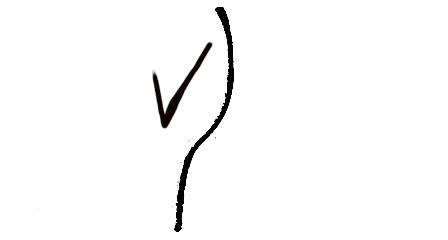BREED

Berrendo
Among the many qualities of pronghorns, the most notable are that they are native, very rustic, very sober, with high resistance to fatigue, very well adapted to use limited forage resources of low or medium quality, with the capacity to mobilize reserves, stored in times of abundance, and take advantage of them in periods of scarcity, expressing an excellent recovery after negative phases of low forage supply.
Such beauty of coat and plasticity, together with its good disposition for training, learning, its quick response to different situations and excellent sense of orientation, explain the fact that it is the preferred breed for haltering fighting bulls. .

Origin
The origin of the Berrenda breed is not well known. The most accepted hypothesis is that of a different origin for its two morphotypes. Both being crosses with an African race, the "Colorado" descendant of Bos taurus desertorum and the "Black" of Bos taurus ibericus. However, although their origins are different, sharing an exploitation system, geographical area and protected status has led to a joint effort being made for their conservation and improvement.
Mechanization, a substitute for animal power, and the entry of foreign meat breeds meant that these breeds went into decline and oblivion. For a few years now, thanks to the efforts of various associations and the collaboration of public administrations, programs of conservation and improvement of the breed with great results, thus preventing this threatened native breed from disappearing.



Berrendo en Colorado
Berrenda en colorado, botinera de las cuatro extremidades llegando hasta rodilla y corvejón, capirote y ojo de perdiz, pudiendo llegar al aparejado y remendado. Desde la cabeza y el cuello puede extenderse el alunarado difuminándose por el tronco. Se presenta gran variedad de tonalidad en el colorado e incluso es frecuente la presencia de mezcla difusa de pelos blancos.
Morphology
With a medium-small head and straight or subconvex profile. Wider and shorter in males than in females. Presence of bump in the shape of an irregular arc. Horns in the shape of an open hook. The neck is elongated with a large dewlap that extends from the chin to the xiphoid, wrinkles can be seen.
In the body we find an elongated trunk with arched ribs, which gives it a deep thorax. The dorso-lumbar line stands out for its straightness, although there may be a somewhat protruding cross. In the caudal area we find a horizontal rump and raised sacrum with the origin of the tail high and forward, this being thin and elongated with a thick tassel.
Its poises of positive disproportion in length are characteristic. Buttock short, straight or slightly convex, ending with extremities with discolored and closed hooves. The bulls register from 800 to 1,000 kg of live weight and 143 cm. medium height at the withers; while that of females ranges between 500 and 600 kg and 138 cm. on average for this elevation.
Productive characteristics
The morphological conformation of this breed gives it an ideal aptitude for childbirth, with a low incidence of puerperal processes as well as reproductive pathologies. They show a great maternal instinct and a hierarchy and protection of their young, they have a great milk production compared to other rustic breeds of meat aptitude, a characteristic that improves breeding for meat and replacement.
Females usually have their first birth between 28-33 months, with the calves weighing 30-35 kg at birth. They are weaned at 6-7 months of age with an average weight of 185 kg. The interval between births is usually around 14-15 months.

